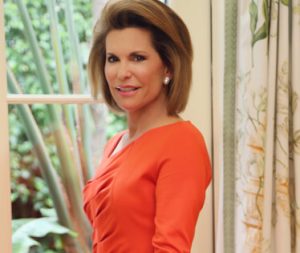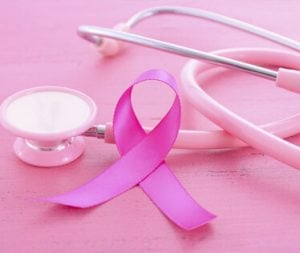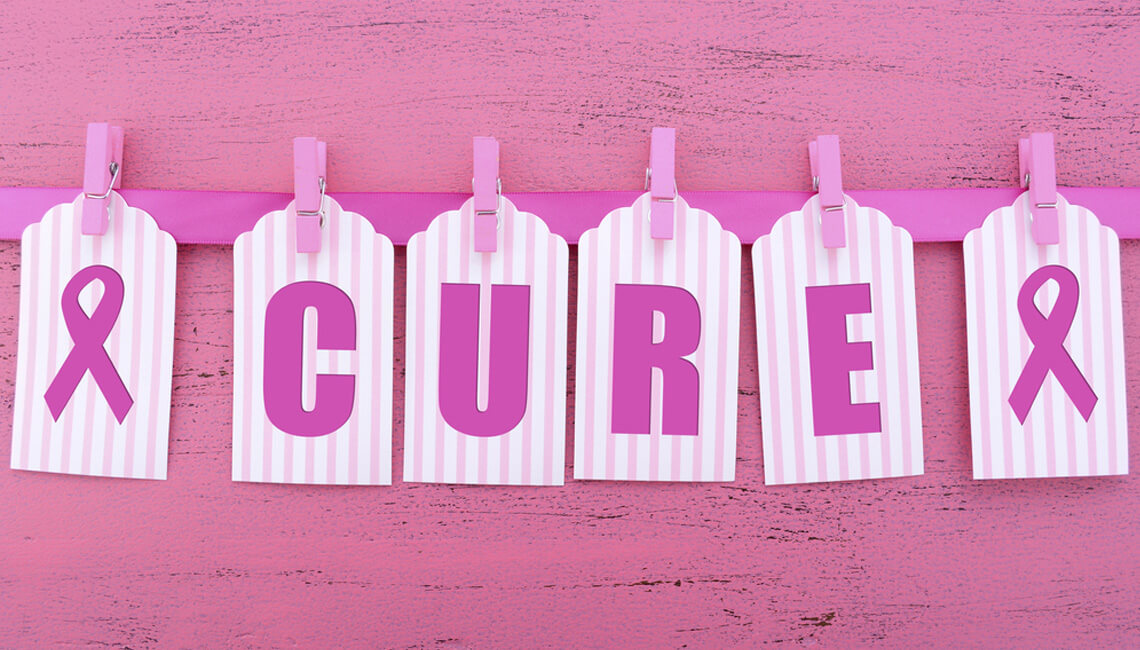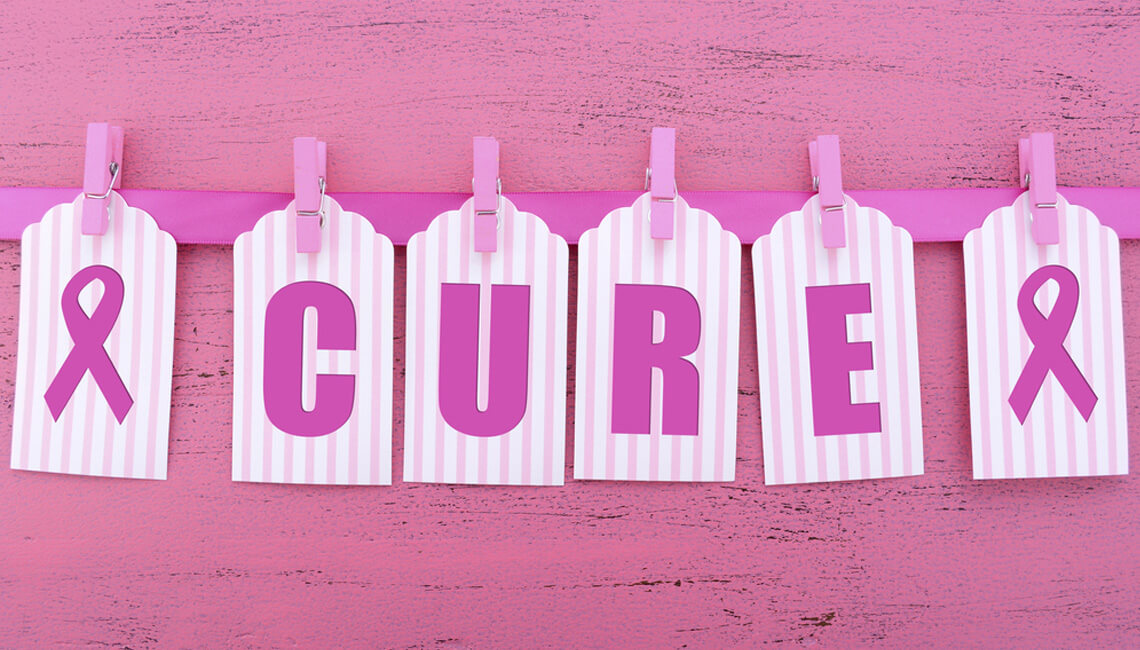By Ruchel Louis Coetzee
Breast cancer does not discriminate. Just ask Sara Rice, a 37-year-old with two small children who discovered a breast lump, or Linda Hagar, a healthy 47-year-old with no family history of breast cancer. Linda had just returned from a gym workout when she noticed one of her breasts pucker after a self-exam. Both Sara and Linda were under 50, the age that the US Preventative Services Task Force recommends women have their first mammogram test. Yet, they are survivors today thanks to the breast cancer awareness campaign and accelerated research dollars made possible by Susan G. Komen® (known also as Komen), the American Cancer Society, and other reputable organizations over the past 32 years.
In a matter of years, Nancy G. Brinker, through the organization she founded, has sliced through the silence around breast cancer by carrying out her promise to her dying sister, Susan G. Komen, and doing everything possible to end the shame, pain, fear, and hopelessness caused by this disease. “One of the most important things we did was build a breast cancer community,” says Brinker. “Every patient that is diagnosed needs a community; they need friends, and they need to know there are people who can be their support team.”


Breast cancer is not a single disease. It is a collection of diseases that have distinct curative features, genomic and genetic inconsistencies, and some very different prognostic outcomes. In essence, it is not a one-size-fits-all. According to the International Agency for Research on Cancer, a part of the World Health Organization (WHO), it is estimated that in 2012, around 1.7 million new cases of breast cancer in women occurred worldwide. And if that is not enough of a disturbing statistic, the American Cancer Society states in their 2016 USA report that about 246,660 new cases of invasive breast cancer will be diagnosed in women, about 61,000 new cases of carcinoma in situ (CIS) will be diagnosed (CIS is non- invasive and is the earliest form of breast cancer), and that about 40,450 women will die from breast cancer.
Miriam Bloch, 67, was on holiday and never thought that the blood she found on her hotel bed sheet was anything but a small scratch from another part of her body. “When another small spot of blood appeared on my bra, I still never questioned it and only brought it up to my doctor as an afterthought when I returned home three weeks later,” she reflects. The concerned doctor had insisted on a closer examination, and it is then that Miriam learned she had a case of carcinoma in situ in her duct glands, which was now spreading, to her lymph nodes. “I am a person who had regular mammograms, with no history of cancer in the family – it was a huge shock.” What helped Miriam process the loss of one breast, the intense course of chemotherapy, and the loss of her prized hair, was the information and patient stories available online that provided her hope and comfort in knowing that she was not alone in this fight.
With acknowledgment to the Komen organization – the “race for the cure,” or as Brinker now admits “the race to control (the disease)” has never been more pronounced. “Metastatic breast cancer (MBC) is responsible for almost all of the roughly 40,000 lives that are lost each year to breast cancer,” says Judith A. Salerno, M.D., M.S., President and CEO of Susan G. Komen®. “It’s important to invest in breakthrough research that will offer these women and men better, more effective options, improved quality of life, and hope for a cure.” Researchers around the globe are furiously working to find better ways to prevent, detect, and treat breast cancer and they continue to make great strides. Two hormone therapy drugs, tamoxifen (Nolvadex) and raloxifene (Evista) are already approved by the FDA to help lower breast cancer risk, although they are limited in use due to concerns about side effects. Neither drug, however, reduces the risk of estrogen receptor-negative cancers. “Tamoxifen is more effective than raloxifene in lowering breast cancer risk,” says Dr. Salerno, “but, raloxifene has fewer harmful side effects so it may be a better choice for some women.”

Miriam understood the benefits of hormone therapy, but she was not overly excited to go that course. “I heard you gain a lot of weight and are constantly fatigued,” she lamented. However, she still resigned herself to the benefits of the five-year therapy plan which would help lower her chance of the DCIS coming back and more importantly, help lower her risk of invasive cancer.
In another two separate studies, researchers are, according to the American Cancer Society, also investigating how (1) a drug related to vitamin A, called Fenretinide and (2) dietary supplements such as grape seed extract, folate, omega-3 fatty acids, and vitamins B6 and B12 can reduce breast cancer risk. Another project that Dr. Salerno is particularly excited about is the Dr. Carol Fabian’s Komen Promise Grant which includes a clinical trial to test whether a component of flaxseed, called SDG, reduces the risk of developing breast cancer in women with a precancerous condition (e.g. lobular carcinoma in situ (LCIS), atypical ductal hyperplasia, or atypical lobular hyperplasia). These and other similar kinds of lifestyle studies are still years away before any meaningful results are discovered, but what it does show is that no stone can be left unturned in this fight.
To date, the Komen organization has funded more than $889 million in research, more than $1.95 billion in medical care, community and provider education, and psychosocial support, serving millions in over 60 countries worldwide. The accelerated funding sources from this organization cobbled together with funds from other reputable cancer organizations, have helped scientists and clinicians to not only study methods of reducing breast cancer risk but more importantly the causes of breast cancer. According to the American Cancer Society, several studies are now concentrating on the effects of weight gain or loss, exercise, and diet while others are focusing on how common gene variations may affect breast cancer risk, or looking at what part the environment plays in this disease. There is a long-term study funded by the National Institute of Environmental Health Sciences (NIEHS), called the Sister Study that will follow 50,000 women who have sisters with breast cancer. Over a ten-year period, the study will be collecting information about genes, lifestyle, and environmental factors that may cause breast cancer (www.sisterstudy.org).
There are also some targeted therapy drugs for treating various stages and types of breast cancer. Some are still in the trial stage, some have received FDA approval, but most are showing great promise. Here are a few of them.
- HER2-Directed Therapies – About 25% of breast cancers have too many copies of a gene called HER2neu (human epidermal growth factor receptor 2). This is a protein that promotes the growth of cancer cells. Thanks to ongoing trials, there are a number of therapies that target HER2 –driven breast cancer, including trastuzumab (Herceptin), lapatinib (Tykerb), T-DM1 (Kadcyla) and pertuzumab (Perjeta). According to Dr. Salerno, trastuzumab specifically does carry a modest risk of cardiotoxicity. “Data is limited on pertuzumab and T-DM1, but what data is available suggest that these agents may be less toxic to the heart than trastuzumab – though they do still carry some risk of cardiotoxicity (as does lapatinib).”
- PARP inhibitors – This is an enzyme involved in DNA repair. Early clinical trials are showing that PARP inhibitors hold the most promise for people with metastatic breast cancer who have BRCA1 or BRCA2 gene mutation. “Ms. Jolie brought vital attention to this disease which still claims 40,000 lives annually in the U.S, but we should remember that most women are not considered high-risk for breast cancer,” says Dr. Salerno. “Inherited gene mutations are only responsible for 7-10% of all breast cancers.”
- Ibrance– A drug to treat advanced breast cancer in post-menopausal women, Ibrance (palbociclib), was approved by the FDA after the Stand Up 2 Cancer (SU2C) Dream Team showed dramatically increased survival rates. Its “Breakthrough Therapy” status sped up its review.
- Anti-angiogenesis drugs- These drugs block the process of blood vessels that help nourish cancer cells from developing are showing great promise in clinical trials. Although, the one drug that helps to block angiogenesis, known as bevacizumab (Avastin), has not proven to be very helpful in treating advanced stages of breast cancer.
- Immunotherapy – Drugs that help the body’s immune system attack cancer cells are now used to treat many cancers. “Komen has actually funded more than $36 million in over 100 research grants and nine clinical trials focused on vaccines and immunotherapy to date,” says Dr. Salerno.
One of the major concerns, however, is the availability and exorbitant costs of these new therapies. Another concern is that potential donors think breast cancer has received enough funding. “It could not be less true because the issue is not funding the cancer research as much as it is delivering what we learn in the lab to the public,” says Brinker who recently chaired the Concordia Summit in New York. “I was in a room with 23 breast cancer scientists, not one of them asked for more money. What they all proclaimed was that the tools that they have built now need to be delivered to people, to prevent the disease, delay the disease, or modify the disease in an accessible and affordable way.”
When it comes to prevention, the fiercely debated mammogram procedure is still the most widely available tool we have to detect breast cancer early. Research estimates that regular screenings with mammography have resulted in 30% fewer deaths from breast cancer. “However, mammography is not perfect,” says Dr. Salerno. “It can sometimes miss tumors or identify tumors that are not cancerous, particularly in women with dense breasts or who are at high risk of developing breast cancer. With more than $34 million invested to date, Komen is investigating more sensitive methods to detect tumors like ultrasound tomography, blood tests, and molecular breast imaging.”
Finally, the quality of life of patients and survivors undergoing cancer treatments has also gained some attention in recent years. Walk into most breast cancer clinics today, and you will find a lot of pink walls. “It was my sister’s favorite color,” says Brinker, who acknowledges that the bland treatment rooms were Susan’s pet peeve. “Today, the patient is often in ambulatory care and though you may go to a physician’s waiting room, more and more of the treatments will be through technology where you probably only have to be infused or treated in an outpatient surgery center with excellent support, education, control, and everything you need for the patient. It’s changed dramatically.”

For Miriam and other cancer patients, it is the hope that these researchers provide, and the hug that the passionate breast cancer community gives that fortifies them to walk another mile each day. For that, we have to thank those spirited, brave souls who have picked up the sword to fight cancer through the centuries. “To the extent of my abilities, I think I have answered the promise I made to my sister – that her life would mean something,” says Brinker humbly. We think she and Susan G. Komen® have answered that promise in spades.












